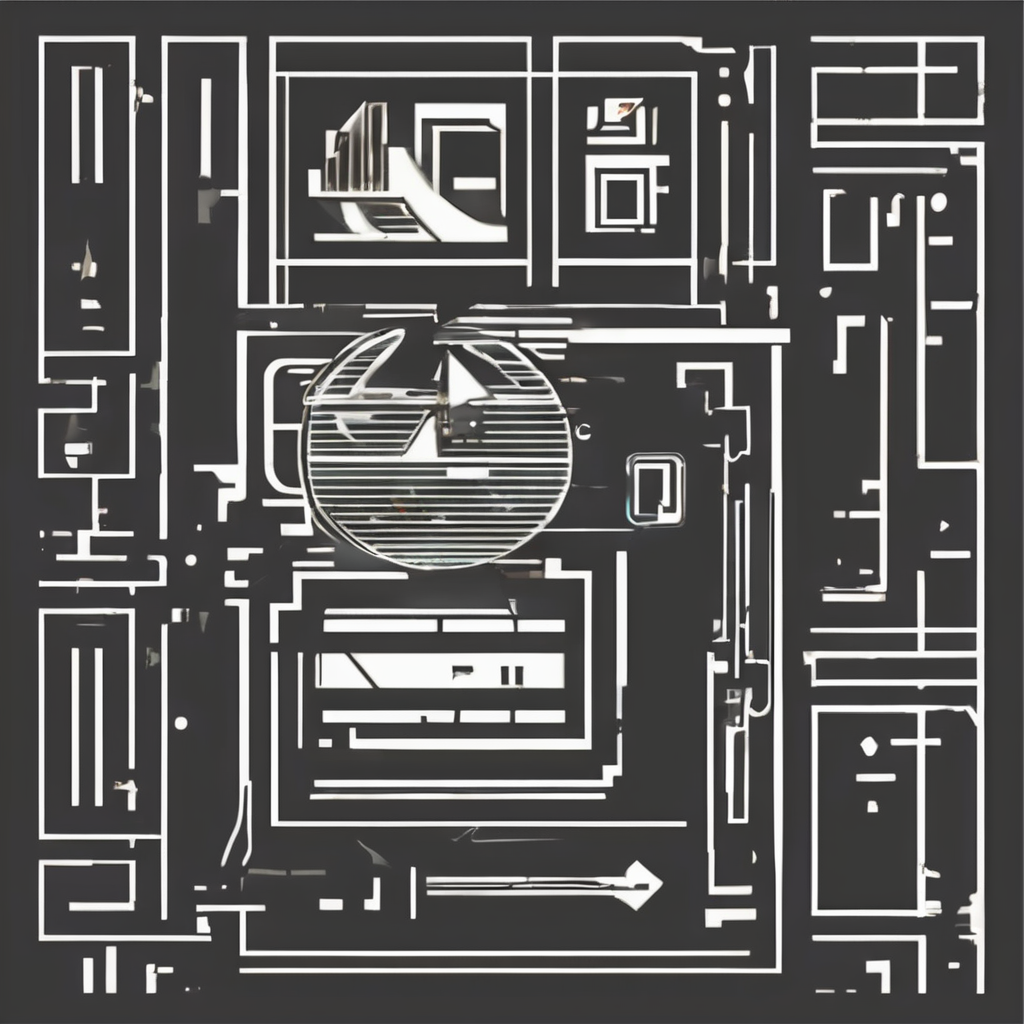Creating standout decorations requires more than just good taste; it demands a methodical approach to prototyping. This practice allows designers to visualize and refine concepts, transforming ideas into tangible experiences. By experimenting with different materials and techniques, you can elevate your decorative projects, whether for personal spaces or grand events. Discover the nuances of crafting unique decorative experiences that leave a lasting impression and inspire creativity in every corner.
Prototyping in Decoration Design
The integration of prototyping into decoration design is a transformative approach that melds creativity with functionality. By utilizing methods like 3D printing and rapid prototyping, designers can experiment with and refine decorative elements quickly and efficiently. This approach not only allows for artistic exploration but also aids in solving practical design challenges.
In parallel : Key elements for developing an effective b2b marketing strategy in birmingham”s business landscape
One notable example of prototyping’s application is the prototyping of decorations through H.stories, which showcases advanced techniques in creating immersive environments for events. By building prototypes, decorators can test various concepts, legalizing innovations and refining aesthetics before final production. This ensures that the final designs are not only visually appealing but also functional and robust.
Prototyping methods such as sketching, 3D modeling, or using digital design tools enable the creation of complex decorative pieces, from simple desk items like the “Tree Tidy” to lavish event scenographies. These prototypes serve as both a visualization tool and a foundation for user feedback, leading to tailored designs that meet client specifications while optimizing material use and cost efficiency.
Have you seen this : Key elements for developing an effective b2b marketing strategy in birmingham”s business landscape
This multi-faceted approach underlines the importance of adopting prototyping in interior decoration and event design, enabling the creation of unique, user-centered decor.
Innovative Decoration Ideas
Leading Trends and Styles
In 2025, decorating trends continue to evolve, embracing new aesthetics and innovative materials. The use of technology in creating interactive decoration prototypes is gaining traction, providing immersive experiences. Styles are heavily influenced by the shift towards sustainability, with eco-friendly decoration practices taking center stage. Incorporating user-centered design, decorators are focusing on personalization and customization, creating pieces that reflect individual personalities and tastes.
Seasonal Inspirations for Decor
Seasonal decoration prototypes allow decorators to harness the nuances of each season effectively. These prototypes encapsulate changing color palettes, motifs, and textures. For instance, spring might inspire lighter colors and floral elements, while autumn could integrate warm hues and rustic materials. Seasonal prototypes are convenient for testing concepts before full implementation, making them invaluable for both personal and professional decorators looking to stay ahead in the decorating trends of 2025.
DIY Approaches to Innovative Decorations
Enthusiasts and professionals alike are exploring DIY decoration ideas to craft unique decorative items. Utilizing prototyping tools, such as 3D printing, allows creators to rapidly iterate and refine their concepts. This method encourages experimentation with various materials like fabrics, promoting material selection based on texture and durability. As a result, individuals can create bespoke items that are cost-effective and embody innovative decoration ideas. Engaging in DIY practices often brings a sense of accomplishment and personalization, making home spaces distinctly personal and modern.
Material Selection for Decoration Prototypes
Essential Materials for Decoration Prototyping
Selecting the right materials for decoration prototypes is pivotal for achieving a balance between aesthetics and functionality. Cardboard is a popular choice due to its versatility and ease of use, making it ideal for crafting initial mockups in decorative design prototypes. This material allows for the creation of detailed prototypes without significant investment. Beyond cardboard, innovative materials for decorations like biodegradable plastics and resin composites are gaining traction due to their sustainability and robust properties.
Exploring Innovative Materials in Decoration
Harnessing innovative materials enables decorators to push boundaries. Recent trends emphasize sustainable materials in prototyping decorations, as they not only reduce environmental impact but also offer unique textures and finishes. Experimentation with 3D printing for decor prototypes opens new avenues for customized designs, offering endless possibilities in creating decorative models. These advancements allow for imaginative uses of light, form, and function in decoration design.
The Role of Color and Texture in Design
Incorporating color theory in decoration design is crucial to evoke the desired ambiance and emotion. Prototyping processes often involve experimenting with different color palettes and layering textures to conceptualize decor themes. Attention to textures and finishes enhances the sensory appeal and engaging sensory experiences in decor. By understanding how these elements work together, designers can develop impactful visualizing decor concepts that resonate with users and spaces alike.
Tools and Software for Decoration Prototyping
Overview of Useful Design Tools
Digital design tools are instrumental for decorators seeking to create impressive prototypes. Prototyping software for decorators like Sketch and Adobe XD offers intuitive interfaces and comprehensive features for crafting decoration designs. These tools enable decorators to visualize decor concepts and experiment with 3D printing for decor prototypes, providing a tangible feel without immediate commitment to materials. Integrating innovative decoration ideas becomes much easier with such resources.
Incorporating User Feedback into Prototyping
Incorporating user feedback in decoration design is essential for ensuring the prototypes meet client expectations. Engaging potential users early on allows decorators to refine their creations better and align with current decorating trends in 2025. User-centered decor design emphasizes the importance of customization, enabling decorators to make precise adjustments. This participatory approach not only enhances interactive decoration prototypes but also fosters collaboration in decoration design processes.
The Role of Design Thinking in Decoration Creation
Design thinking in decorations helps prototyping become a more structured process. This iterative method fosters experimentation, encouraging decorators to explore various materials, colors, and functionalities. The focus remains on crafting functional decoration designs that balance aesthetics with usability. By following a design thinking approach, decorators can adapt to modern decoration styles and address challenges in decoration prototypes efficiently, ultimately enhancing craftsmanship in decoration design.
Functional and Aesthetic Considerations
Importance of Functionality in Decor
Understanding the integration of functional decoration design is crucial for creating spaces that are both practical and visually appealing. An effective design begins by evaluating the specific needs of the space, ensuring each decorative element serves a purpose. For instance, combining storage elements with aesthetic features can maximize both functionality and appeal. Balancing aesthetics and functionality in decorations is key to creating environments that are not only beautiful but also highly usable.
Strategies for Effective Layouts
To achieve effective decoration layout strategies, consider how each piece interacts within the space. Aligning with the room’s dimensions and flow, decorations should foster an intuitive movement, enhancing the room’s natural pathways. By utilizing tools like Figma for digital design prototypes, decorators can experiment with different configurations digitally before implementing them physically. This ensures a harmonious spacemaking where functionality is not compromised for style.
Achieving Aesthetic Appeal Through Design
Creating decorative models that captivate involves using innovative decoration ideas paired with thoughtful material selection. Seasonal decoration prototypes can incorporate current trends, like sustainable and interactive designs, to keep spaces fresh and engaging. Applying color theory in decoration design and experimenting with textures can elevate the room’s visual identity, ultimately crafting spaces that resonate with users on multiple sensory levels.
Testing and Evaluating Decoration Prototypes
Testing Methodologies for Decoration Prototypes
Prototype testing for decorations involves various approaches to ensure both aesthetics and functionality. Rapid prototyping for decor can include techniques such as 3D printing and model crafting, which allow for quick iteration and revision based on feedback. Interactive decoration prototypes are tested through user experience sessions, where real-world interaction highlights the strengths and areas that require improvement.
Evaluating the Effectiveness of Decoration Designs
Evaluation methods for decoration concepts focus on how well the design meets the intended objectives, which could range from enhancing a space’s ambiance to fulfilling a functional need. User feedback in decoration design plays a crucial role in identifying aspects that resonate well with the audience. Craftsmen assess both the aesthetic appeal and the durability of the material selection for decorations during prototype evaluations. This ensures the final product is both beautiful and lasting.
Showcasing Results and Craftsmanship in Decor
Showcasing decoration prototypes effectively involves visualizing decor concepts through high-quality presentation techniques for decor prototypes. This could include detailed mockups or immersive engaging sensory experiences in decor settings. These displays not only highlight the prototype itself but also the craftsmanship in decoration design, offering viewers insight into the process and the subtleties of the final design.
Collaborative Approaches in Decoration Design
Importance of Collaboration in the Design Process
Collaboration in decoration design is pivotal to achieving a harmonious blend of aesthetics and function. By involving diverse professionals, like artists and engineers, the design process benefits from varied expertise, enhancing both creativity and practical execution. These collaborative efforts ensure that the final product is not only visually appealing but also meets the functional needs of the space. Moreover, this teamwork fosters innovation by allowing for the incorporation of cutting-edge techniques such as rapid prototyping and digital design tools. Notably, prototyping decorations enables designers to visualize concepts and test ideas in real-time, expediting the creative process.
Cultural Significance in Decoration Concepts
Cultural influences in decoration play a significant role in shaping distinctive design themes. By integrating storytelling through decoration, designers can reflect cultural narratives, making spaces resonate with authenticity and depth. Such designs not only honor traditions but also create connections through shared stories. By understanding cultural nuances, decorators can craft environments that speak to diverse audiences, harnessing the power of decor to tell engaging stories. This approach adds layers of meaning, transforming spaces into engaging sensory experiences in decor, which captivate and immerse occupants.
Creating Engaging Experiences Through Storytelling Design
Storytelling through decoration transforms ordinary spaces into immersive narratives. By employing elements like color theory and strategic lighting, spaces can evoke specific emotions and memories. Designers often utilize interactive elements in decorations, inviting guests to engage actively with their surroundings. These interactive prototypes, alongside insightful feedback, drive iterative improvements, making the design process dynamic and user-centered. Through these methods, decorators not only create functional beauty but also evoke lasting emotional connections.
Crafting Unique Experiences: The Art of Prototyping Decorations
Prototyping decorations is an essential practice in the world of decor design, where creativity meets functionality. By creating decorative design prototypes, designers can experiment with varied materials, engage in rapid prototyping for decor, and embrace innovative decoration ideas that set trends.
Material and Design Innovation
A critical aspect is the selection of materials, which influences durability and aesthetic appeal. For example, 3D printing for decor prototypes has revolutionized the prototyping process, allowing for detailed customization and an eco-friendly approach through the minimization of waste. Selecting sustainable materials not only supports environmental goals but also aligns with current decorating trends of 2025.
Tools and Techniques
Digital design tools for decoration, such as prototyping software, facilitate the creation of detailed models that push the boundaries of traditional craftsmanship. These tools, like Figma, provide platforms for crafting interactive decoration prototypes, emphasizing user-centered decor design that tailored experiences for specific environments.
Practical Application and Iteration
The prototyping phase allows for the testing of decorative models, ensuring they meet functional requirements and user expectations. Incorporating user feedback in decoration design is vital, enabling refinements that enhance both aesthetics and practicality. Designers can explore prototype testing for decorations by integrating technology or adapting to modern styles.
Future Trends
Innovative decoration prototypes showcase evolving modern decoration styles. Holistic approaches, such as design thinking, blend inspiration for decorators with engaging sensory experiences, crafting environments that not only captivate but also tell stories. Emphasizing sustainable decoration prototyping helps brand identifiable experiences with an impactful narrative.











